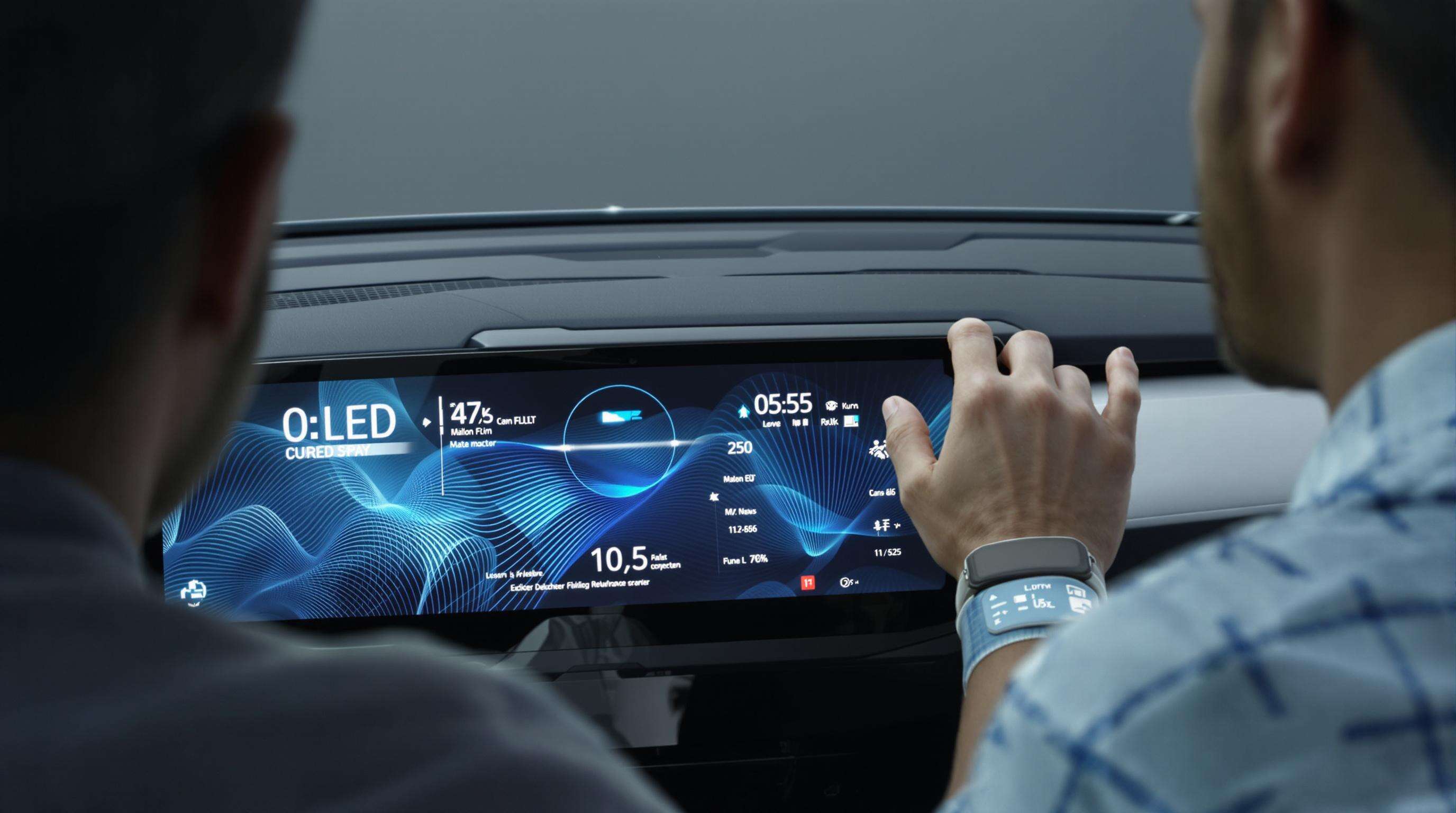Flexible display technology has evolved from conceptual prototypes to mainstream applications through breakthroughs in organic materials and thin-film transistor (TFT) engineering. Unlike rigid glass-based screens, these displays use bendable substrates like polyimide and advanced encapsulation layers to achieve foldability while maintaining durability.
That's been made possible thanks largely to OLED (Organic Light-Emitting Diode) tech, which removes the need for backlighting and instead allows pixels to emit light directly--that's pretty crucial for making ultra-thin, energy-efficient flexible screens. The 2023 launch of the initial foldable smartphone showcased what flexible OLED could do for device form factors, equating to a 34% annual growth rate in bendable display shipments by 2023 (Market Dynamics Report 2025). Today, more than 85% of flexible displays are based on OLED derivatives and quantum dot supplements to achieve a wider color gamut.
Three forces are accelerating the $29.3 billion flexible display industry toward a projected $235.6 billion valuation by 2032:
With microLED and printed electronics reducing production costs by 40% by 2028, analysts predict flexible displays will dominate 55% of the global consumer electronics market within a decade.

Flexible OLED eliminates the need for rigid backlight layers, enabling ultra-thin displays that can bend and fold. Recent advances in polyimide films allow manufacturers to create rollable smartphone screens and foldable tablets. According to research on next-generation optoelectronics, these innovations reduce device weight by 30–40% compared to conventional displays.
AMOLED enhances OLED technology with faster refresh rates and precise pixel control, ideal for high-resolution wearables and smartphones. Its active matrix design reduces energy consumption by 15–20% while maintaining vibrant color reproduction in curved form factors.
| Feature | Flexible OLED | Traditional LCD |
|---|---|---|
| Thickness | <0.3 mm | ≥1.2 mm |
| Power Efficiency | Self-emissive (lower usage) | Backlight-dependent |
| Color Accuracy | 100% DCI-P3 coverage | ~85% DCI-P3 |
| Bend Radius | ≤1 mm | Not bendable |
Breakthroughs in hybrid polymer coatings and ultra-thin glass (UTG) have solved early challenges like screen creasing. UTG layers under 50 microns thick provide scratch resistance while surviving over 200,000 folds. Encapsulation technologies using atomic-layer deposition (ALD) further protect OLED panels from moisture, extending lifespans beyond 5 years (emerging biomedical applications).
Foldable smartphones account for 62% of global flexible display shipments in 2024. These devices combine portability with immersive screen experiences, enabled by refined hinge mechanisms and ultra-thin glass layers. Newer models survive over 300,000 folds—a 40% increase from 2021—and are 25% more affordable since 2022.
Flexible displays enable curved interfaces for smartwatches and AR/VR headsets. Smartwatches now include wraparound AMOLED screens with 30% more surface area. In healthcare, skin-adherent displays monitor vital signs with hospital-grade accuracy.
Rollable OLED TVs combine 4K resolution with mechanical systems that retract screens into compact bases. Key innovations include:
| Feature | Benefit | Technical Challenge Addressed |
|---|---|---|
| Ultra-thin bezels | 98% screen-to-body ratio | Precision roll mechanism calibration |
| Anti-glare layers | Visibility in bright environments | Flexibility without cracking |

Curved OLED panels in heads-up displays (HUDs) reduce driver distraction by 27% compared to traditional dash clusters. Bendable screens integrate into organic dashboard layouts, replacing mechanical controls with adaptive touch interfaces.
Skin-adherent health monitors with rollable OLEDs show 92% user preference over rigid alternatives. Hospitals deploy foldable displays on portable ultrasound units, featuring antimicrobial coatings. Stretchable electronic tattoos display real-time glucose levels through biocompatible materials.
Stretchable screens using elastomeric polymers support medical wearables, while printed displays reduce costs through roll-to-roll manufacturing. Quantum dot and perovskite innovations enhance color vibrancy.
| Innovation | Key Material Advancement | Impact |
|---|---|---|
| Stretchable | Silicone-polymer hybrids | Enables body-conforming health sensors |
| Rollable | Thin-film encapsulation | Extends product lifespan |
AI-integrated wearables and IoT-connected rollable screens will drive growth, with flexible displays penetrating smart agriculture and architectural surfaces.
Flexible display technology involves using bendable materials and innovative designs to create screens that can fold, roll, or bend without damage, making them ideal for smartphones, wearables, and other applications.
OLED technology allows pixels to emit light directly, eliminating the need for backlighting. This contributes to ultra-thin, energy-efficient screens that can be flexible.
Industries like consumer electronics, automotive, and healthcare are adopting flexible display technology for applications in devices such as foldable smartphones, automotive dashboards, and wearable health monitors.
Bendable substrates like polyimide and advancements in encapsulation techniques are used in flexible displays, often combined with OLED derivatives.
Emerging innovations include stretchable, rollable, and printed flexible displays, driven by advances in material science and manufacturing techniques.

